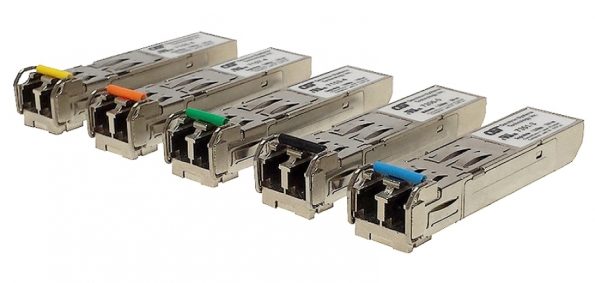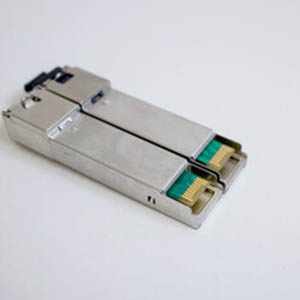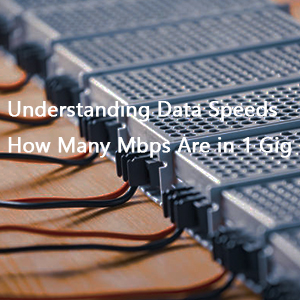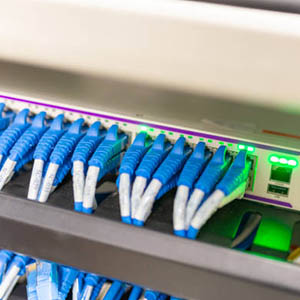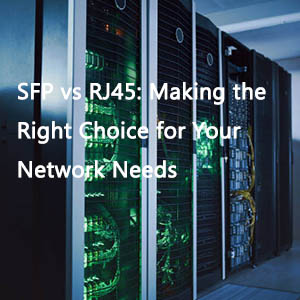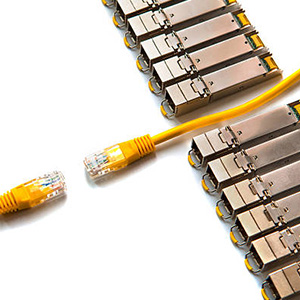Harnessing the power of CWDM technology, the SFP optical transceiver allows the convergence of distinct wavelength signals through an external wavelength division multiplexer, revolutionizing fiber optic communication by conserving valuable fiber resources.
In the modern era, data centers have evolved from mere rooms of computers to complex clusters of information hubs. These hubs must operate in unison to support the ceaseless operation of numerous internet services and software platforms. The real-time exchange of massive data volumes between these facilities has necessitated the development of interconnection networks, with fiber optic communication emerging as an indispensable tool for achieving this interconnection.
Unlike traditional telecommunication access network transmission equipment, the interconnection within data centers demands higher speeds, reduced power consumption, and more compact switching devices to facilitate extensive and dense information transmission. The SFP optical transceiver stands as the pivotal element that determines the realization of these enhanced performance metrics. While the data network predominantly utilizes optical fibers as the transmission medium, modern computation and evaluation rely on electrical signals, making the SFP optical transceiver the linchpin for photoelectric conversion.
The Three Applications of SFP Optical Transceivers:
- From Data Centers to Users: This application arises from end-user activities such as cloud access, web browsing, email exchange, and video streaming.
- Data Center Interconnection: Often employed for data replication, software and hardware updates.
- Within the Data Center: Primarily utilized for data storage, processing, and analytics.
What is a CWDM SFP Optical Transceiver?
The CWDM SFP optical transceiver, leveraging CWDM technology, enables the transmission of multiple wavelength signals through a single fiber by an external wavelength division multiplexer, thereby conserving fiber resources. At the receiving end, a wavelength demultiplexer is required to decompose the complex optical signal.
CWDM transceiver modules are integral to CWDM systems. Within a WDM framework, the CWDM SFP module is integrated into the switch, working in concert with the CWDM demultiplexer or OADM optical add-drop multiplexer and fiber optic patch cables.
The SPF Optical Transceiver Module Application in 5G Networks:
The advent of 5G technology heralds boundless opportunities for the field of optical communication. SFP modules based on 5G base stations have become a focal point of research over the past two years. The 5G network is typically structured into layers such as the metro access layer, metro aggregation layer, and metro core layer/provincial trunk line, facilitating both fronthaul and mid-backhaul functionalities for 5G services. Each layer relies heavily on SFP modules for interconnection.
Optical Module Requirements for 5G Fronthaul Scenarios:
- Industrial Temperature Range and High Reliability: Given the outdoor deployment of AAU, fronthaul optical modules must withstand the industrial temperature range of -40°C to +85°C and meet dustproof standards.
- Cost-Effectiveness: The demand for 5G SFP modules is projected to surpass that of 4G, with a significant need for front-haul optical modules. Low cost is a fundamental requirement for enterprise adoption of SFP optical modules.
In 5G, the backhaul encompasses the access, aggregation, and core layers of the metro area. The SFP optical modules required are similar to those used in current transmission networks and data centers. The access layer will commonly utilize 25Gb/s, 50Gb/s, 100Gb/s, and various types of grey or colorless modules, while the convergence layer and above will typically employ 100Gb/s, 200Gb/s, 400Gb/s, and different cost-effective DWDM color light modules.


